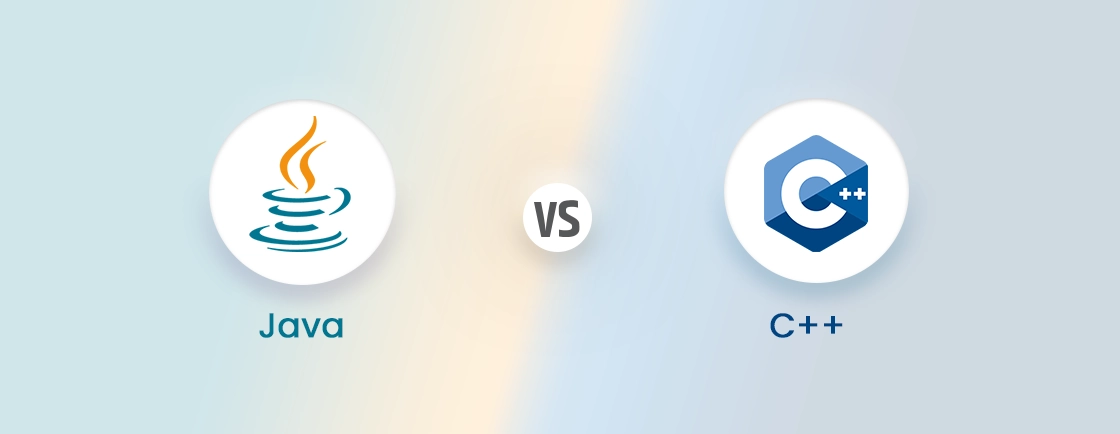Table of Contents
Building a high-performing web development team is essential for businesses to establish a strong online presence. However, finding and hiring skilled web developers can be challenging. You may opt for IT staff augmentation services or IT managed services to bridge this gap.
In this blog, we’ll dive into the fundamentals of both IT managed services and staff augmentation. We’ll also do a quick comparison of both terms, followed by a detailed one. So, let’s begin!
Understanding IT Managed Services
IT managed services is a specialized subset of managed services focusing only on information technology. It involves outsourcing the management and other IT infrastructure to a third-party service provider, known as a Managed Service Provider (MSP).
This model shifts the responsibility for maintaining and improving IT infrastructure from the internal IT team to the MSP. The MSP manages and maintains the IT environment under a service level agreement (SLA) that specifies the performance and quality to be met.
Types of IT Managed Services
IT managed services contain a range of IT functions that are outsourced to a third-party provider. These components work together to ensure the smooth operation and security of an organization’s IT infrastructure.
- Network Management: This involves maintaining the organization’s network infrastructure, including routers, switches, firewalls, and wireless access points. It ensures network performance, fixes issues, and implements security measures.
- Cybersecurity: Protecting the organization’s systems and data from cyber threats is an important component. That includes implementing firewalls and antivirus software and conducting regular security audits.
- Data Backup and Recovery: Regular data backups and disaster recovery plans are essential to protect against data loss. IT managed services include implementing and managing backup strategies, testing data restoration, and ensuring business continuity.
- Help Desk Support: Providing technical assistance to users is a crucial aspect of IT managed services. That involves resolving hardware and software issues, answering user queries, and providing remote support.
- IT Consulting: Offering strategic IT guidance and recommendations is another valuable component. MSPs can help organizations assess IT needs, develop strategies, and implement technology solutions.
- Cloud Management: Managing cloud-based services and applications is becoming increasingly important. IT managed services include overseeing cloud infrastructure, ensuring data security, and optimizing cloud usage.
The type of IT managed services required by an organization depends on what domain they are working on. By assessing your needs, you can select the optimal services to support your IT goals.
Benefits of IT Managed Services
IT managed services offer a multitude of advantages for businesses of all sizes. Here’s a breakdown of the key benefits:
- Cost Reduction: IT managed services can significantly reduce operational costs. By outsourcing IT functions, businesses eliminate the need for in-house IT staff, hardware, software, and maintenance expenses. This leads to predictable IT budgets and improved financial management.
- Improved Efficiency: Managed service providers bring expertise and standardized processes to IT operations. This results in increased efficiency, reduced downtime, and faster problem resolution. Businesses can focus on core competencies while IT is managed effectively.
- Access to Expertise: IT managed services provide access to skilled IT professionals. Businesses can tap into specialized knowledge without hiring and training in-house staff. This ensures access to the latest technologies and best practices.
- Scalability and Flexibility: It can be easily scaled up or down to meet the changing needs of a business. This flexibility supports business growth and allows you to build customized solutions for evolving demands.
- Focus on Core Business Activities: Outsourcing IT management allows internal teams to concentrate on strategic initiatives and core business functions. By reducing the IT burden, businesses can increase productivity and innovation, leveraging technology to drive growth and achieve competitive advantages.
- Improved Decision Making: They offer valuable IT insights and recommendations. This data-driven approach supports informed decision-making, helping businesses align IT strategies with overall business goals.
- Reduced Downtime: Active monitoring and maintenance minimize system failures and reduce downtime. This leads to increased productivity and reduced business disruptions.
These benefits of IT managed services help businesses save money and improve efficiency by outsourcing IT tasks. Experts handle your tech needs, letting you focus on growing your business. It’s like having a reliable IT team without the hassle of hiring and managing one.
Understanding IT Staff Augmentation
IT staff augmentation is an outsourcing strategy that enables companies to hire skilled IT professionals with the flexibility to meet their specific project needs. It brings in external talent to supplement your existing IT team. That means hiring workers with necessary skill sets to work on particular projects or fill the skill gaps.
In this hiring model, you partner with a staffing agency or IT services provider to acquire the necessary talent. These professionals become a part of your team, working and following your project guidelines.
Types of IT Managed Services
IT staff augmentation can be categorized based on various factors, including duration, scope, and location. Here are the primary types:
- Short-term staff augmentation: It addresses immediate needs like project deadlines, employee leaves, or workloads. It offers flexibility to scale the team quickly and efficiently without long-term commitments.
- Long-term staff augmentation: This type of augmentation focuses on filling persistent skill gaps or supporting ongoing projects. It provides a stable workforce to handle workloads and contributes to the team’s capabilities.
- Project-based staff augmentation: It focuses on hiring IT experts specifically for the duration of a project. These professionals work with the internal team to ensure the project is completed on time. Once the project concludes, the augmented staff is released, providing flexibility and cost efficiency.
- Skill-based staff augmentation: It involves hiring experts with specific technical knowledge unavailable within the current team. By bringing in experts with the needed skills, businesses can execute specialized tasks efficiently and effectively.
- Onshore Augmentation: It involves hiring talent within the same geographic location. It facilitates face-to-face collaboration and reduces cultural and time zone differences. It is particularly valuable for roles requiring coordination with the internal team.
- Offshore staff augmentation: This augmentation leverages talent from different countries, often at lower costs. It can access specialized skills but may require more management due to time zone differences. This is a suitable type for tasks that can be managed remotely.
- Nearshore staff augmentation: It is a middle ground between onshore and offshore augmentation. Nearshore staff augmentation combines cost benefits with geographic proximity, offering a balance between offshore and onshore models.
- Dedicated Team Augmentation: In this type, you can hire a dedicated team specifically for a project or client. This model provides a cohesive unit with shared goals and responsibilities.
- Pay-per-Hour staff augmentation: This model offers budget and resource allocation flexibility. Clients pay only for the actual hours worked.
Organizations can choose the most suitable model to address their specific IT staffing needs by understanding these types. If you plan to expand or need help with a growing workload, consider hiring our IT staff augmentation services.
Benefits of IT Staff Augmentation
IT staff augmentation provides businesses with a flexible and efficient way to meet their IT needs. Here are the key benefits of IT Staff Augmentation:
- Scalability and Flexibility: It provides the flexibility to quickly adjust your workforce based on project demands or business fluctuations. You can easily scale up or down without incurring the costs of hiring and firing full-time employees.
- Immediate Access to Talent: IT staff augmentation allows businesses to quickly fill skill gaps and meet project demands without the long recruitment process. External professionals with their expertise can contribute immediately, ensuring project deadlines are met.
- Cost Efficiency: This approach reduces the need for long-term employment contracts, benefits, and training costs. Companies pay only for the specific skills and duration needed, ensuring financial resources are used effectively.
- Access to Specialized Talent: Finding skilled professionals with specific expertise can be challenging. Staff augmentation offers access to a wider talent pool, allowing you to find the perfect fit for your projects.
- Risk Mitigation: IT staff augmentation reduces the risk of hiring full-time employees who may not meet long-term needs. It allows for a trial period with external professionals before considering permanent employment.
- Reduced Time-to-Market: By bringing in experienced professionals, you can accelerate project timelines. This allows you to introduce new products or services to the market faster.
These benefits enhance the workflow and let you manage project deadlines easily. It fills the required skill gaps and provides efficiency. Now let’s dive into the quick difference between the above discussed topic.
Quick Difference Between IT Managed Services and Staff Augmentation
| Aspect | IT Managed Services | IT Staff Augmentation |
|---|---|---|
| Definition | Outsourcing IT management to a third-party provider | Hiring external IT professionals to fill specific roles or skill gaps |
| Control | Managed by the service provider | Managed by the internal team |
| Scope | Comprehensive, covers various IT functions | Specific, targeted at particular projects or skill needs |
| Duration | Long-term, ongoing support | Short-term or project-based |
| Cost Structure | Fixed monthly fees or subscription-based | Variable, based on hours worked or contract length |
| Flexibility | Less flexible, predefined services and terms | Highly flexible, can scale up or down quickly |
| Expertise | Broad expertise across multiple IT domains | Specific expertise targeted at project needs |
| Onboarding Time | Longer, due to the comprehensive nature of services | Shorter, professionals are ready to start immediately |
| Responsibility | Provider is responsible for outcomes and performance | Company retains responsibility for project outcomes |
| Focus | Maintaining and optimizing IT infrastructure and operations | Enhancing internal team capabilities with additional skills |
| Risk Management | Provider handles risk management and compliance | Company manages risk with augmented staff |
| Scalability | Scales with business growth, but predefined scope | Easily scalable to meet immediate project demands |
| Cost Predictability | High, with predictable monthly fees | Variable, based on project scope and duration |
| Ideal for | Organizations seeking a comprehensive IT solution, lacking in-house expertise, or aiming to reduce IT costs | Businesses with specific project needs, skill gaps, or short-term resource requirements |
IT Managed Services vs. Staff Augmentation: Detailed Comparision
IT managed services and staff augmentation are two distinct models for addressing IT needs. While both involve external resources, they differ significantly in scope, control, and long-term implications.
Flexibility
IT managed services offer a predefined set of services under a contractual agreement. While these services cover various aspects of IT management, they are less flexible once the terms are set. This approach works well for businesses that need consistent and ongoing support without changes in service requirements.
Staff augmentation provides a high level of flexibility. Businesses can scale the workforce up or down based on project demands or changing business needs. This approach allows you to make quick adjustments to the size of the IT team. It is ideal for projects with changing requirements or when specific skills are needed temporarily.
Verdict: staff augmentation offers more flexibility in resource allocation and adjustment than IT managed services.
Level of Control
With IT managed services, the provider gets control over the day-to-day management and operation of IT functions. While the business sets the strategic goals and performance metrics, the provider is responsible for executing tasks. That can lead to less direct control over specific IT operations as the provider follows agreed-upon procedures and protocols.
Staff augmentation allows businesses to maintain full control over their projects and tasks. The augmented staff integrates with the internal team and works under the company’s supervision. This approach ensures decision-making authority directly manages the workflow, priorities, and outcomes.
Verdict: If you prefer to maintain direct control over IT operations, staff augmentation is the better choice. But if you don’t want to manage it all, an IT managed service could be your choice.
Security
IT managed services offer robust security measures as part of their service offerings. These include following security protocols, regular updates, and monitoring to protect the site against threats. The provider’s expertise in cybersecurity can enhance the overall security, but you need to trust in their ability.
With staff augmentation, security measures depend on the company’s existing policies of the augmented staff. External professionals bring their expertise, but integrating them into internal security is crucial. The business needs to ensure that external experts follow their protocols and practices to maintain a secure environment.
Verdict: For enhanced security with comprehensive and continuous protection, IT managed services are typically more effective. However, with proper integration and oversight, staff augmentation can also maintain a high level of security.
Costs
IT managed services often operate on a fixed monthly fee or subscription model. That provides predictable costs, making it easier to budget for IT expenses. While the costs might be higher, the services often justify the investment, as they cover a wide range of IT needs.
Staff augmentation costs vary based on the duration of the project and the expertise required. This approach can be more cost-effective for short-term projects or when specific skills are needed temporarily. However, costs can fluctuate, making budgeting less predictable.
Verdict: IT managed services offer more predictable costs. On the other hand, staff augmentation provides greater flexibility, which adds to cost benefits.
Project Duration
IT managed services are designed for long-term, ongoing support. That makes it suitable for organizations with consistent IT needs. The long contract terms may not be suitable if you are looking for something short term.
Staff augmentation is well-suited for short-term or project-based engagements. It allows businesses to quickly bring in the necessary skills for the duration of a specific project. Once the project is completed, the augmented staff can be released, providing flexibility and cost efficiency.
Verdict: Staff augmentation offers greater flexibility in terms of project duration. On the other hand, IT managed services give you less flexibility when changing project duration needs.
The choice between IT managed services and staff augmentation depends on the specific needs and priorities of the business. IT managed services are ideal for long-term, IT support with predictable costs and enhanced security. Conversely, staff augmentation offers greater flexibility, control, and cost efficiency for short-term projects and specific skill requirements.
Which is Better? IT Managed Services or Staff Augmentation?
Deciding between IT managed services and staff augmentation for web development projects can be challenging. Both approaches offer distinct advantages and cater to different business needs. Here is how you can select the best option accordingly:
Choose IT managed services if:
- You require comprehensive, long-term IT support and maintenance.
- You want predictable and stable costs for your budgeting.
- You prefer a trusted partner to manage your IT infrastructure, allowing you to focus on core business activities.
- You need continuous monitoring and advanced security protection.
Choose IT staff augmentation if:
- You require specialized skills and expertise for short-term projects or fluctuating workloads.
- You need higher flexibility and scalability, which is crucial for changing project needs.
- You prefer direct control over your web development projects and IT operations.
- You want to quickly integrate external professionals with your existing team to address specific project needs.
By evaluating your project requirements and understanding each model, you can make a wise choice. If you are finding it hard to meet project deadlines or need help filling skill gaps, consult with a IT staff augmentation company.
FAQs About IT Managed Services vs Staff Augmentation
What is the difference between IT managed services and staff augmentation?
IT managed services involves outsourcing IT infrastructure management to a third-party provider. On the other hand, staff augmentation focuses on providing specific IT personnel to supplement an existing team.
Can I combine both IT managed services and staff augmentation?
Yes, a hybrid approach can be effective for organizations with complex IT needs. IT managed services can provide consistent, ongoing support. Conversely, IT staff augmentation can address specific projects or temporary skill gaps, creating a balanced IT solution.
What are the potential downsides of IT managed services?
Potential downsides include less direct control, dependency on the provider, and limitations in service flexibility. Additionally, transitioning to a managed service model can be disruptive initially.
Compare the best tech side by side.
Our in-depth comparisons help you see features, pros & cons, and choose the right tools confidently.





